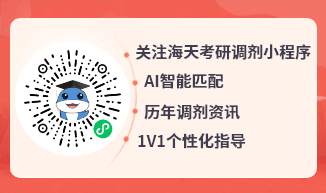考研英语阅读经典试题及答案1
暑假已经结束,考研的复习还未结束。同学们在新学期更要努力备考,掌握知识点和技巧。海天考研小编为同学们整理了考研英语经典的阅读练习题,希望对同学们的复习有帮助。
Although recent years have seen substantial reductions in noxious pollutants from individual motor vehicles, the number of such vehicles has been steadily increasing. Consequently, more than 100 cities in the United States still have levels of carbon monoxide, particulate matter, and ozone (generated by photochemical reactions with hydrocarbons from vehicle exhaust) that exceed legally established limits. There is a growing realization that the only effective way to achieve further reductions in vehicle emissions — short of a massive shift away from the private automobile — is to replace conventional diesel fuel and gasoline with cleaner-burning fuels such as compressed natural gas, liquefied petroleum gas, ethanol, or methanol.
All of these alternatives are carbon-based fuels whose molecules are smaller and simpler than those of gasoline. These molecules burn more cleanly than gasoline, in part because they have fewer, if any, carbon-carbon bonds and the hydrocarbons they do emit are less likely to generate ozone. The combustion of larger molecules, which have multiple carbon-carbon bonds involves a more complex series of reactions. These reactions increase the probability of incomplete combustion and are more likely to release uncombusted and photochemically active hydrocarbon compounds into the atmosphere. On the other hand, alternative fuels do have drawbacks. Compressed natural gas would require that vehicles have set of heavy fuel tanks — a serious liability in terms of performance and fuel efficiency — and liquefied petroleum gas faces fundamental limits on supply.
Ethanol and methanol, on the other hand, have important advantages over other carbon-based alternative fuels: they have higher energy content per volume and would require minimal changes in the existing network for distributing motor fuel. Ethanol is commonly used as a gasoline supplement, but it is currently about twice as expensive as methanol, the low cost of which is one of its attractive features. Methanol’s most attractive feature, however, is that it can reduce by about 90 percent the vehicle emissions that form ozone, the most serious urban air pollutant.
Like any alternative fuel, methanol has its critics. Yet much of the criticism is based on the use of “gasoline clone” vehicles that do not incorporate even the simplest design improvements that are made possible with the use of methanol. It is true, for example, that a given volume of methanol provides only about one-half of the energy that gasoline and diesel fuel do; other things being equal, the fuel tank would have to be somewhat larger and heavier. However, since methanol-fueled vehicles could be designed to be much more efficient than “gasoline clone” vehicles fueled with methanol they would need comparatively less fuel. Vehicles incorporating only the simplest of the engine improvements that methanol makes feasible would still contribute to an immediate lessening of urban air pollution.
1. The author of the text is primarily concerned with
[A] countering a flawed argument that dismisses a possible solution to a problem.
[B] reconciling contradictory points of view about the nature of a problem.
[C] identifying the strengths of possible solutions to a problem.
[D] discussing a problem and arguing in favor of one solution to it.
2. According to the text, incomplete combustion is more likely to occur with gasoline than with an alternative fuel because
[A] the combustion of gasoline releases photochemically active hydrocarbons.
[B] the combustion of gasoline embraces an intricate set of reactions.
[C] gasoline molecules have a simple molecular structure.
[D] gasoline is composed of small molecules.
3. The text suggests which of the following about air pollution?
[A] Further attempts to reduce emissions from gasoline-fueled vehicles will not help lower urban air-pollution levels.
[B] Attempts to reduce the pollutants that an individual gasoline-fueled vehicle emits have been largely unsuccessful.
[C] Few serious attempts have been made to reduce the amount of pollutants emitted by gasoline-fueled vehicles.
[D] Pollutants emitted by gasoline-fueled vehicles are not the most critical source of urban air pollution.
4. Which of the following most closely parallels the situation described in the first sentence of the text?
[A] Although a town reduces its public services in order to avoid a tax increase, the town’s tax rate exceeds that of other towns in the surrounding area.
[B] Although a state passes strict laws to limit the type of toxic material that can be disposed of in public landfills, illegal dumping continues to increase.
[C] Although a town’s citizens reduce their individual use of water, the town’s water supplies continue to dwindle because of a steady increase in the total populating of the town.
[D] Although a country attempts to increase the sale of domestic goods by adding a tax to the price of imported goods, the sale of imported goods within the country continues to increase.
5. It can be inferred that the author of the text most likely regards the criticism of methanol as
[A] flawed because of the assumptions on which it is based.
[B] inapplicable because of an inconsistency in the critics’ arguments.
[C] misguided because of its exclusively technological focus.
[D] inaccurate because it ignores consumers’ concerns.
[答案与考点解析]
1. 【答案】C
【考点解析】这是一道中心主旨题。本文的中心主旨句是首段的尾句。通过对首段尾句以及其它段落主题句的阅读和理解,可以推导出本题的正确选项是C。考生在破解此类题型时一定要首先抓住原文的中心主旨句以及各段的主题句。
2. 【答案】B
【考点解析】本题是一道指代词题型。根据题干中的“incomplete combustion”可将本题的答案信息来源迅速确定在第二段的第四句,该句中的指代词“these”暗示本题的具体答案信息来源应该在第二段的第三句。通过阅读和理解第二段的第三句可推导出本题的正确选项是B。考生在解题时对指代词一定要认真理解。
3. 【答案】A
【考点解析】本题是一道审题定位题型。通过题干中的“air pollution”可将本题的答案信息来源迅速确定在第一段,因为第一段首句中含有“noxious pollutants”,都在谈污染的问题。通过阅读和理解第一段,尤其是第一段尾句即全文的中心主旨句,可推导出本题的正确选项是A。这是一道比较难的题。考生在解题时一定要具备审题定位能力,还要具备归纳和推导能力。
4. 【答案】C
【考点解析】这是一道类比题型,因为本题题干中含有“parallels”(与……相当,与……一样)一词。本题题干已将类比的参照对象确定在第一段的首句。通过仔细阅读和理解第一段的首句,可推导出本题的正确选项是C,因为该选项涉及的增减关系的前提条件和原文一脉相承。考生在破解这种题型时应对原文所表达的内容与关系有明确的认识和把握,不可以无根据地推导。
5. 【答案】A
【考点解析】这是一道细节推导题型。本题题干中的“the criticism of methanol”把本题的答案信息来源确定在第四段的第一、二句。通过阅读和理解这两句话,尤其是第二句话,就可推导出本题的正确选项A。考生在破解本题时一定要注意第二句话的第一个词“Yet”在语意上所起的作用。考生在解题时一定要重视启承转合词的出现和功能。
2025考研人数达388w,考研热度依旧火热!如何备战2026考研?哪个考研专业适合自己?在职考生如何备考?考研知识点繁多,择校困难大,和海天考研咨询老师聊一聊。网课面授多项选,专业辅导1对1,全年集训随时学!

上一篇:考研政治近代史可考察的简答题汇总
下一篇:考研英语阅读经典试题及答案2






